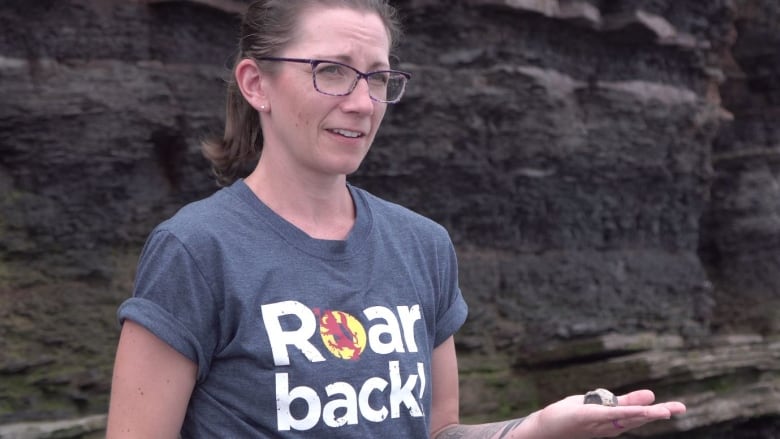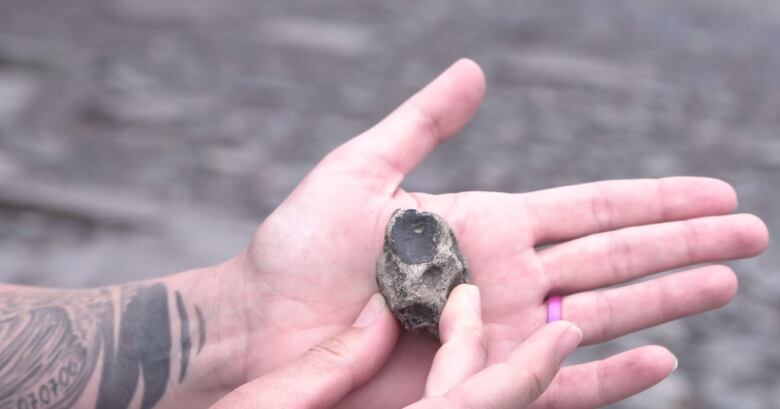Minas Basin fossil discovery may help fill gaps in evolutionary record
Rare tetrapod skull is around 350 million years old

When Dalhousie University biology instructor Jennifer Frail-Gauthieraccompanied a group of students last Wednesday for her 10th fossil hunt at Blue Beach, N.S.,she never thought she would be the one making a breathtaking discovery.
But that's exactly what happened when she happened upon a fossilized tetrapod skull.
She said the day began as it always did with Chris Manskyof the Blue Beach Fossil Museumtelling the students about the kinds of fossils they would find on the Minas Basin beach near Hantsport and what they represent.
Frail-Gauthiersaid Mansky always told the students to look out for black bits in the rocks as they might be pieces of bone, scales or teeth.
"He always ends it with, 'If you find the infamousjawbone or part of the skull, that is the holy grail of discoveries.'"
While exploring the rocky beach,Frail-Gauthier spotted some black spots on a rock and picked it up.
Tetrapod skull
What shefound wasthe fossilized skull of a creature from the period when animal life first began to move from the ocean to land.
Blue Beach is one of several sites in Nova Scotia where fossils have been found in abundance. Mansky said the high tides in the Bay of Fundy erode the cliffs along the shoreline to reveal the natural history.

"New fossils can be found basically in the same spot you were standing the day before and there was nothing," he said.
Fossil record
The fossils of tetrapods animals with four limbs anddigits specialized to live on land are especially significant because there is agap in the fossil recordfrom about 350 million years ago.
Few fossils have been found in this period that marks the movement of creatures from water to land.
According toFrail-Gauthier, Blue Beach is one of the few places in the world where rocks from that period are found. The only other good fossil site, she said, is in Scotland.

The skullshe found is only the second such skull to be found on Blue Beach in the 25 years that Mansky has been there.
Frail-Gauthier said having two tetrapod skulls from the period is a huge benefit to scientists trying to fill the gap in the fossil record.
"What becomes really awesome is thatit's more than the sum of the parts because you can make those evolutionary comparisons," she said.
Describing her fossil find as a "fluke discovery," Frail-Gauthier said Mansky and Sonja Wood of the fossil museum deserve the credit for their tireless work to keep scientific discovery going.
The fossilized skull is being kept at the museum and is available for academic research and study.
MORE TOP STORIES












_(720p).jpg)


 OFFICIAL HD MUSIC VIDEO.jpg)
.jpg)



























































































